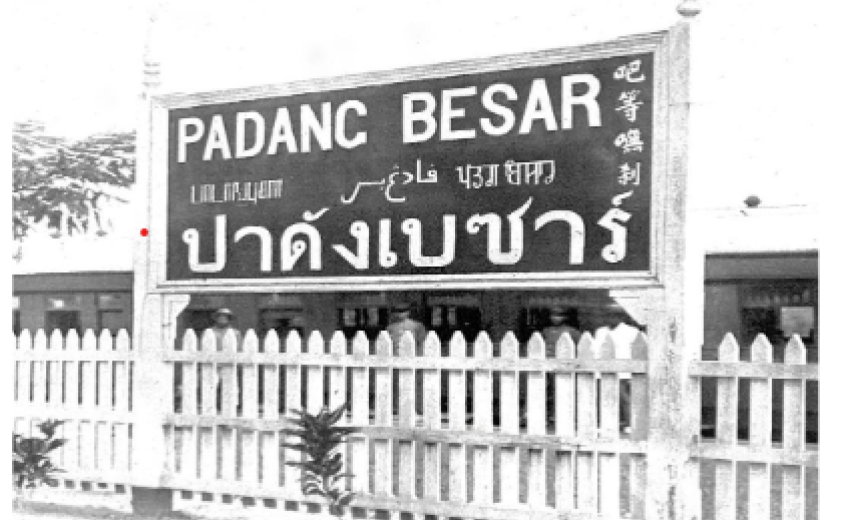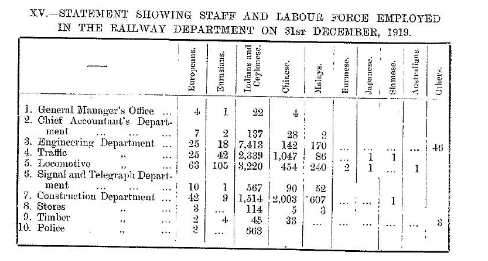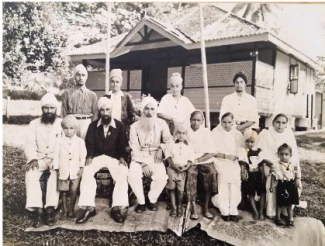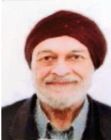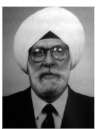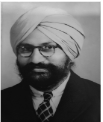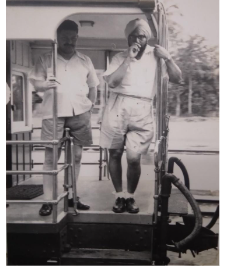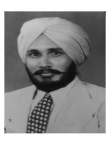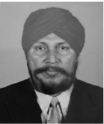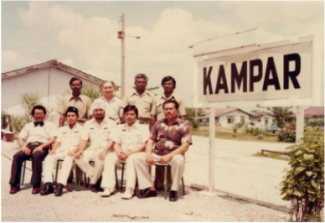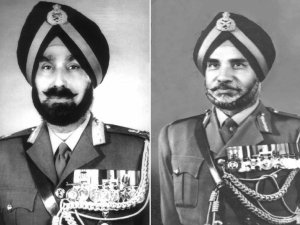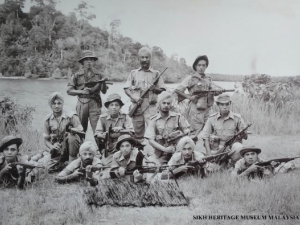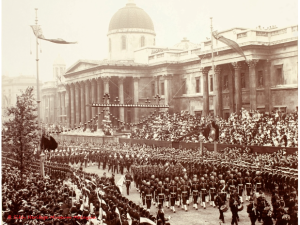STATION NAME BOARD, PADANG BESAR (JUNCTION OF F.M.S. AND SIAMESE RAILWAYS) Giving the station name in English, Siamese, Jawi, Chinese, Tamil & Punjabi (Gurmukhi) characters. Circa 1919. Photo courtesy of F.M.S. Railways 1919.
When you look at the railway station board closely, you will see that, the name is given in large plain letters and in a few languages - English, Jawi, Chinese, Tamil, Siamese & Punjabi (Gurmukhi).
Did you know these scripts represent the diverse population of Malaysia who played a pivotal role in shaping the country?
The construction of railroads created numerous job opportunities, attracting a diverse workforce to the country.
The migration of railway workers to these areas contributed to urbanization and population growth, enabling the exchange of ideas, cultures, and traditions and fostering a sense of national unity among the diverse populations.
Often, generations of Indian families found themselves employed in various roles in the Railways — from guards, ticket collectors, station masters, and permanent-way laborers to locomotive drivers.
These rail workers kept the rail system moving over the years and their stories are little known and are worthy to be shared and praised.
The railway age dawned in Malaya on 1st June 1885. On this date, the country’s first train set off on an 8-mile journey between Taiping to Port Weld.
As the years went by more railway lines were built in West Malaya. The mileage of Federated Malay States Railway's (F.M.S.R.) network then, further grew from 428 miles in 1907 to over 1000 miles in 1919.
The growth of railroads throughout history has facilitated the growth of towns, leading to improved quality of life in many areas. This was primarily due to the rapid expansion of the tin-mining industry in the Larut region and Kinta Valley.
The railroad was the engineering milestone in Malaya's history that shaped the finances of the colonial government & transformed travel for people in Malaya.
The need for maintenance of its rolling stock i.e. locomotives, passenger carriages, goods wagons, and other related equipment become a high priority. A large engineering workshop with various disciplines was planned. The then British government recruited skilled workers who could repair locomotives, passenger coaches, goods wagons, and all the ancillary equipment related to these.
Source: - F.M.S. Railways. report for the year of 1919, by P.A. Anthony General Manager &Chief Engineer F.M.S. Railways. Pg. 41.
A large number of Sikhs were recruited for the above tasks as well as for administration and other technical work. More than 16,500 staff & labor force (Indians & Ceylonese) were employed in the railway department as of 31st December 1919 as shown in table 'xv' above. Source: - F.M.S. Railways. report for the year of 1919, by P.A. Anthony General Manager & Chief Engineer F.M.S. Railways. Pg. 41.
They were entrusted with building the railways and manning, maintaining, and operating trains across the country.
They were the backbone of this intricate network that kept the wheels of the nation moving. Their pride in workmanship and their devotion to duty was unparalleled.
Three generations in the railways. The family of Sardar Jiwan Singh Judge.
Seated L-R : - Bir Singh, Sohan Singh s/o Sarja Singh (standing) ,Sarja Singh, Jiwan Singh, Shamsher Singh (standing) Mrs. Jiwan Singh, Mrs. Bir Singh, Karnail Singh (standing), Mrs. Sarja Singh & Nasib Singh (Standing). Standing from L-R: Gian Singh, Balbir Singh, Kuldeep Singh, & Kalwant Singh. Photo taken at their house in Bangi, Circa 1936
"Flipping through their photo album and narrating anecdotes, reminiscing about old times. The now-retired railway workers and the departed, loved ones, tell stories about their experiences and collective memories of railways.
There were some really good times, as evidenced by the smiles on their faces in some of these pictures, but there were also some gut-wrenching emotional times, where they turn misty-eyed".
'The apple doesn't fall far from the tree'!
Jiwan Singh's family was closely connected to the railways. Three generations of the family held jobs within the railway industry continuing the dream of their father and grandfather.
The ancestor of this railway family was Mr. Jiwan Singh Judge, an older-generation railwayman from Bhajauli Kharar, Punjab. Jiwan Singh studied at Christian College Kharar, Punjab, and came over to the Federated Malay States in 1916. He joined the F.M.S. Railways in the same year. He served as a station master in Sungai Buloh, Kajang, and Bangi and finally retired as Station Master at Sentul railway station in 1950.
Jiwan's brother, Mr. Sarja Singh Judge was born in 1905 and came to the Federated Malay States in the 1920s. He worked at the central railway workshops Sentul as a "Kepala" headman in one of the sections in the department. He served in the Federated Malay States Railways for more than 35 years. With his initiative, he helped many Sikh immigrants from Punjab to work in the railways.
Sarja Singh's eldest son, Mr. Sohan Singh, was working at the central railway workshops in Sentul. Unfortunately, he was killed in the workshop during the Allied bombings in 1945. Hundreds of others died at their benches in the workshop on that fateful day. Sarja Singh's third son, Mr. Karnail Singh also served with the railways as a clerk at Sentul office, for more than 30 years.
'Served on the infamous Thai-Burma death railroad and survived Allied bombings of Sentul workshops and Brickfields Railway yards'.
Mr. Kalwant Singh Judge s/o Jiwan Singh came to Malaya in 1921. He studied at Maxwell School, in Sentul and later at Kajang High School, passing out with a Senior Cambridge certificate sometime in 1932.
In 1937 he secured a job as a temporary checker in the railways at Brickfields. In 1940, he was promoted and stationed at Kuala Lumpur goods yard. In 1941 he was promoted to clerk in charge and transferred to Bukit Badong. He served in numerous places like Gemas and Kajang before being transferred to head office.
During the Japanese occupation in Malaya, in 1943, Kalwant Singh was sent to the Thai-Burma railroad to serve as a station master at Wampo (Wanpo), a major marshaling and locomotive yard at that time. He returned to Malaya after injuring himself while serving in Wampo. After recuperating, he was reposted back to Sentul by the Japanese.
During the post-war period, he continued to serve with the railways. Rose to the rank of senior officer serving in Pasir Mas, Prai, K.L, Seremban, Singapore and finally Port Klang retiring in 1970 as a railway traffic inspector.
A keen hockey player. He was also involved in many sports organizations like the Railways Recreational Club, Malayan Sikh Union, Selangor Sikh Union, and the Malayan Olympic Council. He was one of the founder members of the Malayan Olympic Council in 1954 which paved our participation in the 1956 Melbourne Olympics.
Mr. Kalwant Singh's son, Mr. Prem Singh also served in the railways in the account's office for more than 10 years.
Prem Singh shared these accounts from his father's dairy: - 'Sentul Workshop was bombed by Super-fortress aircraft of the Americans on 19/2/1945 destroying Sentul station and parts of the workshop. I escaped that day as I had to go on relief duty to Batu Caves station. Again on 10/3/1945, the Allied planes bombed Railway Workshop and yards in Brickfields.
Mr. Prem Singh
I was on duty there & sheltered under tapioca plants along the Klang River along with many others and cheated death once again.
He lived up to ripe age of 99 fully able till his last breath in 2013.
Besides Mr. Jiwan Singh's family, many other Sikhs also served in the railways. It's important to recognize the contributions of these Sikhs, who contributed their skills and knowledge to its success.
We take a peek into the lives of these unsung heroes and discover the untold stories of their hard work and dedication in building and maintaining the country's railway network. The glory of the Malayan Railways is not complete without mentioning the true heroes who work towards the safety and betterment of it.
I have interviewed and selected 14 stories which to be shared. For your convenience, I have divided this article into 3 parts. The next installment of this three-part story is about the Locomotive drivers who transported passengers and goods safely to their destinations. The final part story is about the Permanent Way Inspectors, Station Masters, Railway Guards, and railway Police.
From an Apprentice to a Deputy General Manager.
Ir. Dalip Singh
(Deputy General Manager )
Ir. Dalip Singh s/o Bahadur Singh joined as an ordinary apprentice in the Central Railway Workshop in Sentul, Kuala Lumpur, on 1st of June 1936.
In early 1945, he was arrested by the Japanese Kempeitai (Secret police) along with his colleagues. They were accused of being “British spies” and were interrogated and tortured and they were sent to the detention ward in Pudu Prison, but they were later acquitted and discharged.
He gradually rose from this position to district locomotive assistant and to district locomotive superintendent in charge of all locomotive depots in the country. In 1958, he was promoted to works manager of Sentul Works.
In 1962, the Railway Workers went on its biggest strike, and a train was derailed north of the Johor Bahru Railway Station. The driver of the breakdown crane was on strike and that made clearing the track almost impossible. So, Ir. Dalip Singh personally operated the crane. He managed to clear the track.
In 1962, he was promoted to chief mechanical engineer, in 1971, he was promoted to deputy general manager (engineering and operations). He retired in April 1974.
'The Japanese officers pointed the rifle at his father'.
Mr. Gurbachan Singh
(Senior Traffic Superintendent)
Mr. Harmeet Singh shared stories of his late father, Mr. Gurbachan Singh. They were staying at the railway's quarters along Jalan Silibin, Ipoh Perak. During the Japanese occupation, in 1944 when he was about 5 months old, one day the Japanese officers came running to their quarters at night when they saw the quarters light ON. They were warned before, not to ON any lights, especially during the "blackout restrictions”. Anyone who does not follow the rules will be severely punished. The Japanese officers were banging on their quarter's door. His father, who was carrying him at that time, opened the door. The Japanese officers were very angry, and they pointed the rifle at his father. They saw him carrying the crying child in his palm. He explained to the Japanese that his son was not feeling well, and that's why he had to ON the light for a while.
The Japanese soldiers showed empathy when they saw his son crying and they also carried the child. They gave them a chance and warned him not to do that again and they left. His father, Mr. Gurbachan Singh shared the story to him that Harmeet saved the lives of his family during the incident.
Mr. Gurbachan Singh on the GM's coach. Mr. Gurbachan Singh s/o Sunder Singh was a traffic Inspector with over 21 years of traffic operational service. He was responsible for the efficiency of station and train work in his district.
He was born on 31st December 1915 in Kuala Lipis, Negeri Sembilan. He studied at Anderson School Ipoh from 1930 to 1934. Passed Senior Cambridge in 1933. Joined the F.M.S. Railways in 1935. He was the President of Malayan Railways Club from 1958~1959. He was the champion for 'Shot-Put' in Malayan Railways Sports for 10 years. Retired as Senior Traffic Superintendent in December 1969 in Malayan Railways. He was conferred the 'Bintang Ahli Kelantan' by His Highness the Sultan of Kelantan in 1961. Mr. Gurbachan Singh passed away on the 11th of December 1969
Mr. J'swant Singh
(Senior Assistant Traffic Superintendent)
Gurbachan's younger brother Mr. J'swant Singh also served in the railways. He was born in 1918 in Penang and studied at Anderson School Ipoh from 1931~1936. He passed his Junior Cambridge Examinations. He joined the Federated Malay States Railways in 1938 as a Junior Clerk. Between 1947 to 1955, he served as a clerk in Tumpat, Sg. Golok, Thailand, Port Swettenham, Kluang and Kuala Lumpur.
In 1958, he served as a Traffic Inspector at Kuala Lipis. He rose to District Traffic Superintendent at Gemas and Kuala Krai and Chief Train Controller at Kuala Lumpur. In 1973, he was the Senior Assistant Traffic Superintendent at Malayan Railways, HQ, Kuala Lumpur. He retired from the service in December of the same year.
He was a trade unionist for Malayan Railway Junior Officers Union in 1948. He was also the founder member & 1st secretary of, Senior Officers Association Malayan Railways 1950's. Mr. J'swant Singh passed away on 15th September 2002.
"Foiled rail sabotage bid."
Mr. Sarjit Singh
(Controller)
Born in 1939, Mr. Sarjit Singh s/o Inder Singh was educated at Anglo Chinese School, Kampar from 1945 to 1956. After completing his secondary education, he joined the railways and worked at various railway stations in Peninsular Malaysia.
He commenced his journey as a general clerk at Kampar in December 1957 and after serving in different parts of Malaysia gradually, he retired as a controller in June 1994 at Gemas. He worked in the railways for 37 long years with dedication.
He and his team were responsible for the efficient running of trains between Kuala Lipis and Singapore and handled all emergencies like floods, derailments, accidents, staff matters etc.
He was very active in the railway men's union of Malaya where he held an executive position in the union.
Mr. Sarjit Singh seated in the middle, with his staff at Kampar Station Circa 1980.
Mr. Sarjit Singh shared a story, one day, it was time for the Express Rakyat from KL. He received a tip-off that some men were planting some explosives on the railway line from Temoh to Kampar. He and his pointsman immediately descended the slope and walked toward the spot. Sure enough, they saw some wired devices that resembled explosives. He informed the Police and his district officers and stopped all trains due from the south. The Police team went to the spot to confirm the claim and called the Bomb Disposal Unit. The track was opened for normal traffic late in the afternoon.
